The forever cool of cobalt

Simply sign up to the Style myFT Digest -- delivered directly to your inbox.
It is rare that something can feel both elusive and ubiquitous. Cobalt blue – the colour of Renoir’s lakes, van Gogh’s nightfall and Georgia O’Keeffe’s New Mexico skies – achieves this. Most recently, the colour peeped out naughtily from the actor Emma D’Arcy’s leather gloves at the Golden Globes.
Scientists have had a hard job bottling blue. Despite its resemblance to the sea and sky, there are few examples of the hue in nature. Even today, only a handful of pigments are available, the latest being 2009’s discovery of YInMn. As a result, the colour has always been highly coveted. According to Pantone Color Institute’s director, Leatrice Eiseman, cobalt is “one of the blue tones that has a certain subtle excitement. Not as serious as navy, nor as high-powered as vivid electric, it [is] a well-balanced blue that bridges the two.”
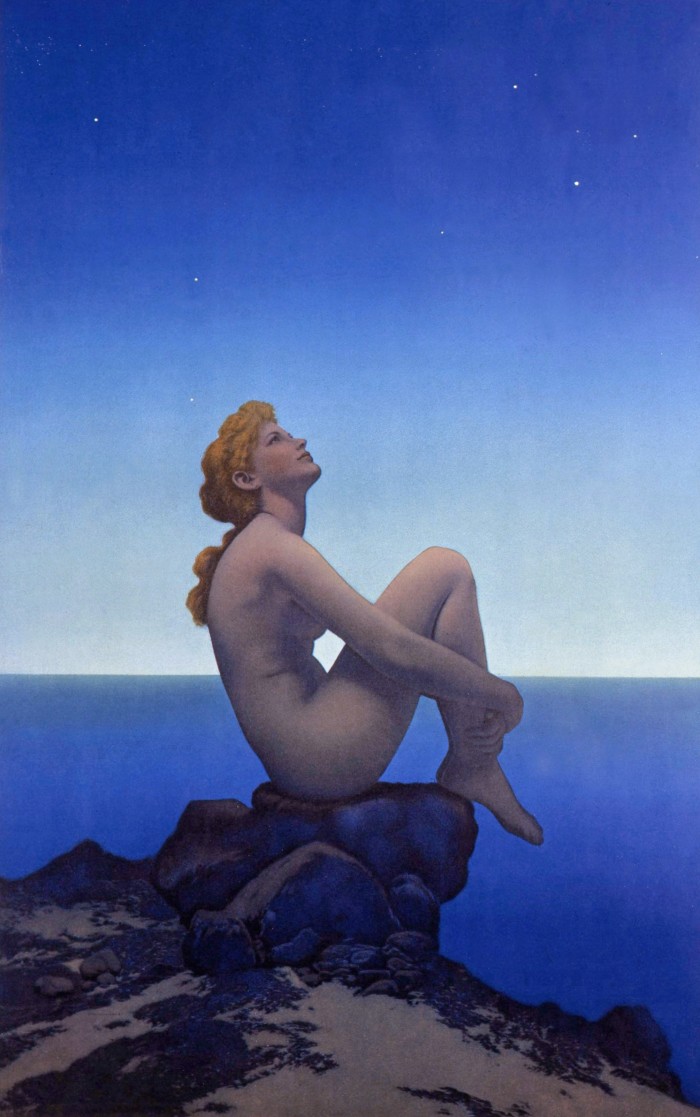
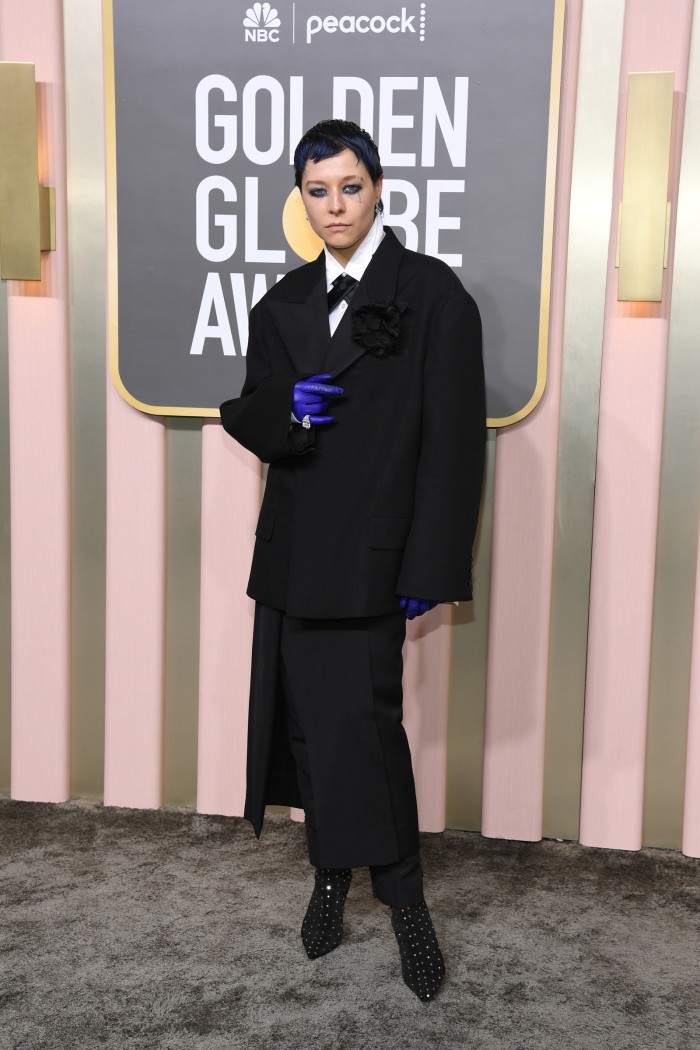
The pigment’s most famous association is with the Virgin Mary, whose robes were realised in “marian blue”, a variation of ultramarine, during the Middle Ages and Renaissance. “Culturally, [blue] came to be associated with joy, peace, loyalty and comfort,” says historian Regina Lee Blaszczyk, author of The Color Revolution. Later, when sumptuary laws were introduced after the bubonic plague, blue was excluded from all regulations. “Historians don’t know why, but we can speculate that blue was already ubiquitous in clothing – it didn’t threaten the status of the elites,” offers Blaszczyk.
The latest collections prove that cobalt is as exciting as ever – be it a mud-stained clog at Balenciaga or via Alexander McQueen in a double-breasted suit. At Off-White’s spring/summer presentation, shades of cobalt featured across jackets, dresses and hole-punctured bodysuits. “This is a colour of significance for our world and the community inhabiting it,” read the show notes, which describe the shade as “impossible blue”.
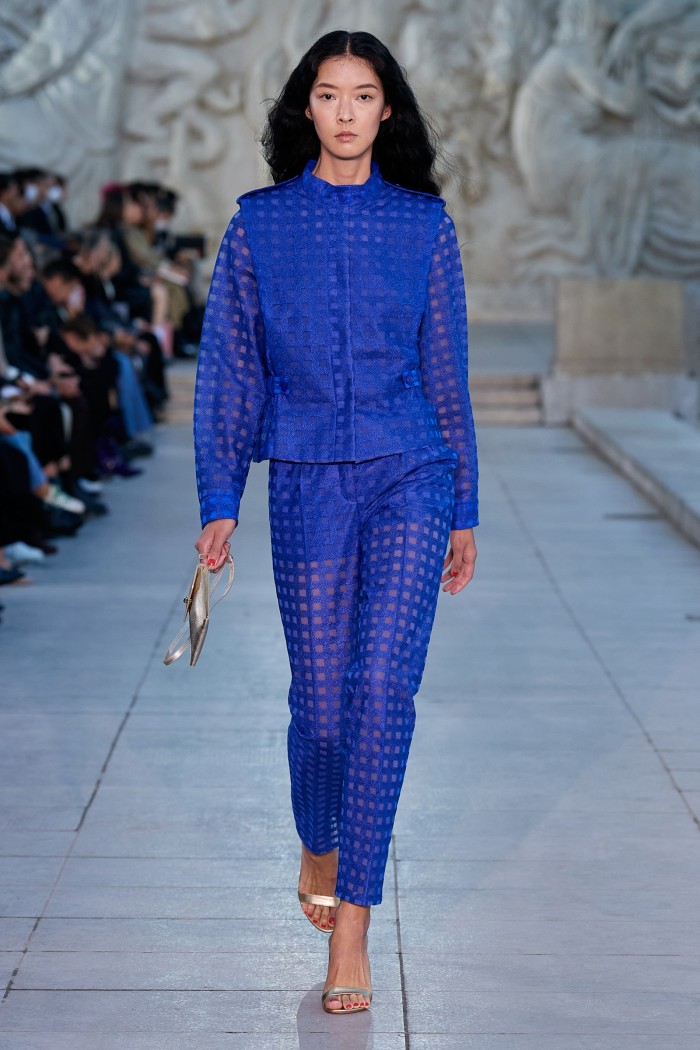
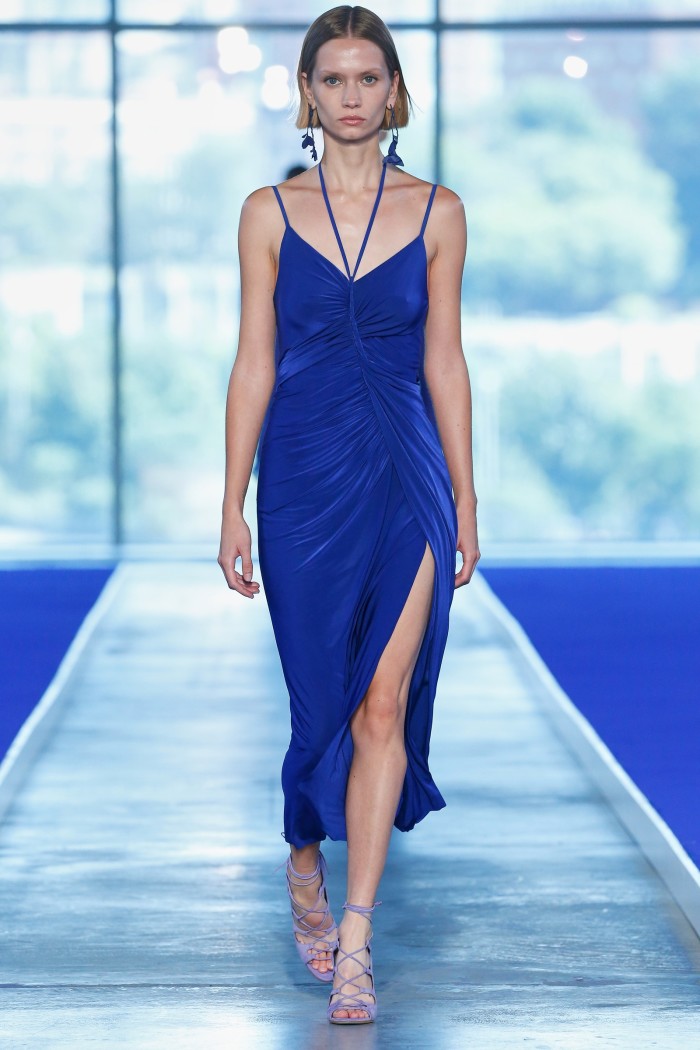
Designers David Koma and Alberta Ferretti both see cobalt in the ocean, resulting in handwoven macramé dresses for Koma and flowing jumpsuits for Ferretti. “The shade serves as a mood-lifting element,” says Ferretti. “Blue [reminds] me of summers by the Adriatic Sea.”
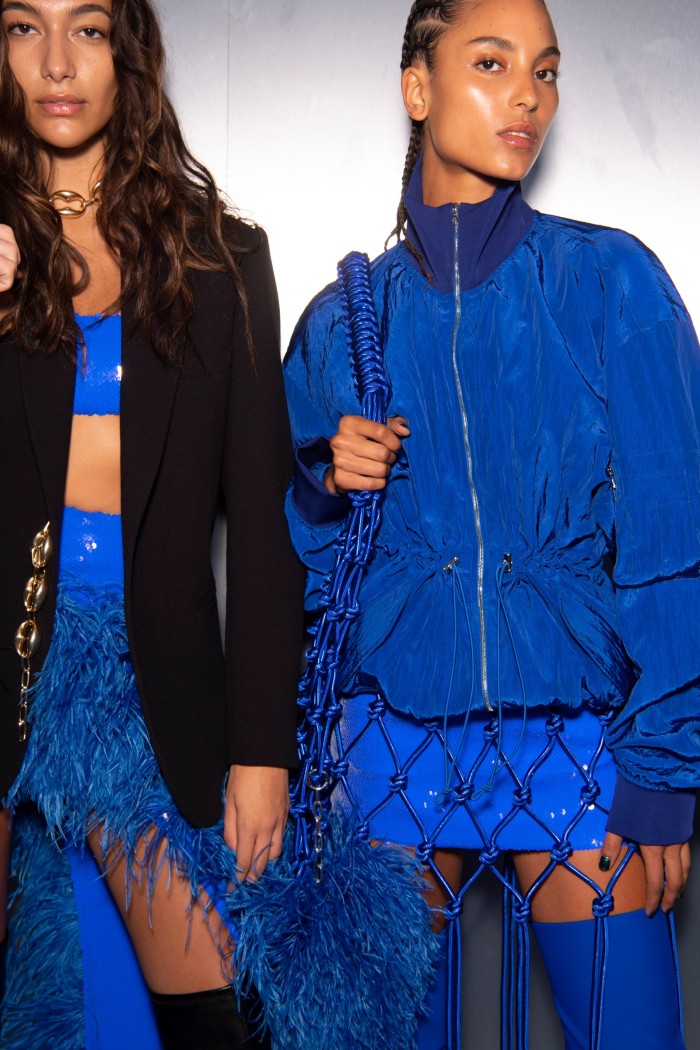
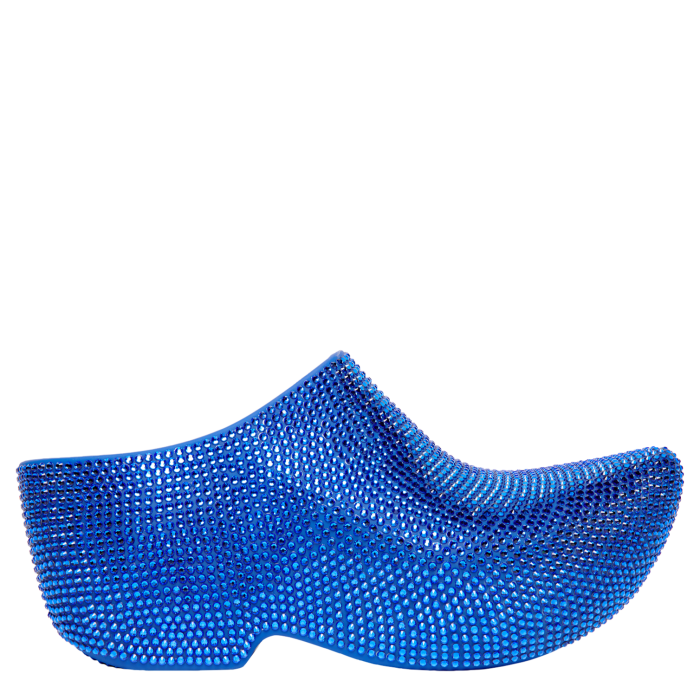
Balenciaga’s SS23 clog
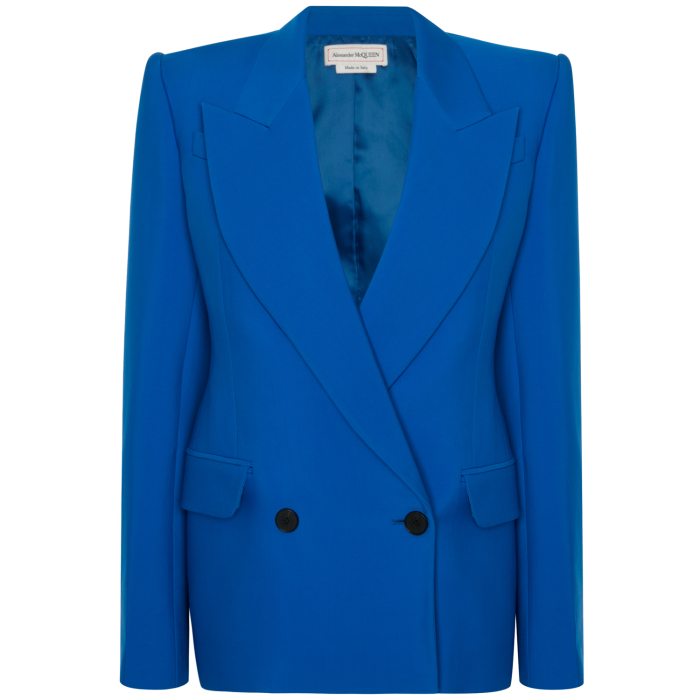
A Blazer from Alexander McQueen’s SS23 collection
A similar hue stirs the memory of artist Philip Archer, whose recent exhibition at Open Eye Gallery in Edinburgh dealt with loss, feeling and spirit. “Searching for the colour blue is a challenge, but [it’s] what I try to do,” he says, citing Cézanne’s rich landscapes and the cobalt wall in The Conversation by Matisse. Many of the paintings allude to Archer’s late wife, Helen. In Terra Madre, inspired by the couple’s love for the Langhe in Italy, cobalt illustrates the darkest shadows in a shop window. At the centre is a far-off mountain, shaped like Helen lying down.
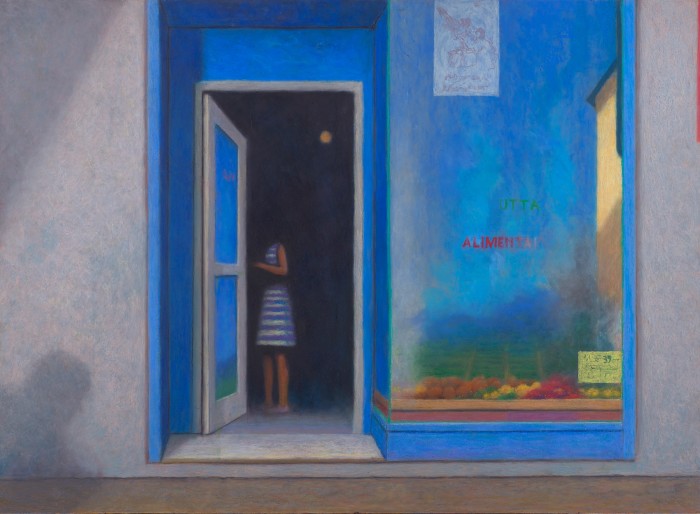
It was also Italy that inspired Yves Klein, the French artist famed for his International Klein Blue, a mix of ultramarine, indigo and cobalt. “Yves Klein is just the master of blue,” says Akris creative director Albert Kriemler, who has splashed the colour across lace dresses, outerwear and suits. For Klein, blue was an expression of his religious upbringing, and he once said that it was “beyond dimensions”. The colour is aptly referenced in Derek Jarman’s 1993 film Blue, in which International Klein Blue illustrates the late director’s descent into blindness.
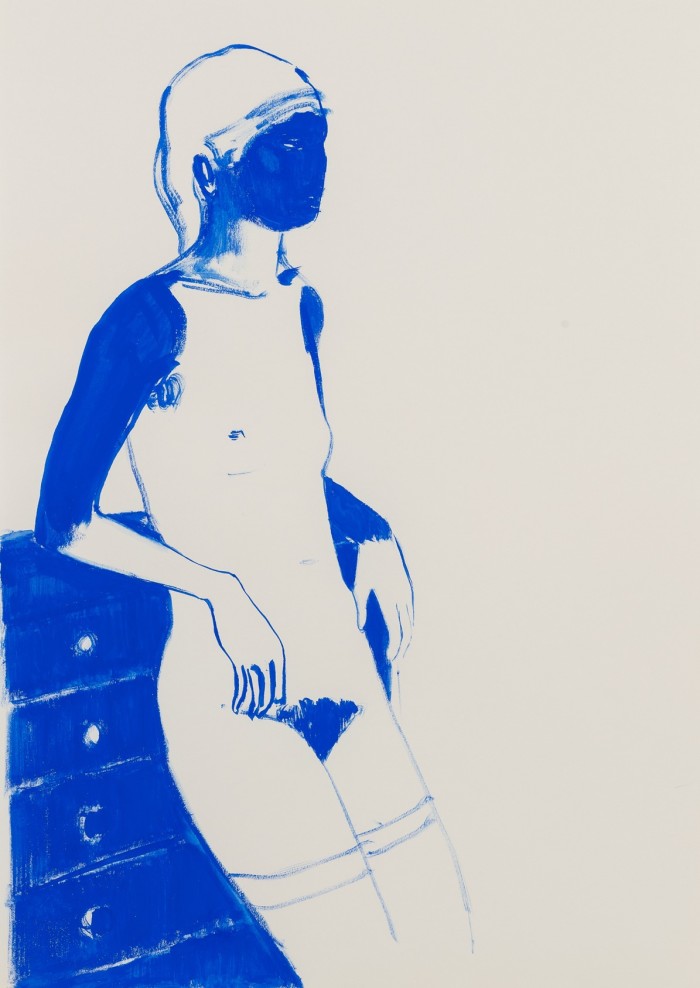
The early- to mid-20th century was a popular time for cobalt. Klein instructed naked women to cover themselves in blue paint as part of a performance; Matisse explored the female form with blue cut-outs; and American painter Maxfield Parrish positioned neoclassical nymphs against inky-blue skies. These artists come to mind when looking at Lisa Brice’s nudes, where cobalt is used to reposition the male gaze and remove assumptions about race. “In my work, this colour can suggest skin covered in paint or tinted mud, obscuring naturalistic skin tones and interrupting a preconditioned reading of the subject,” she told HTSI.
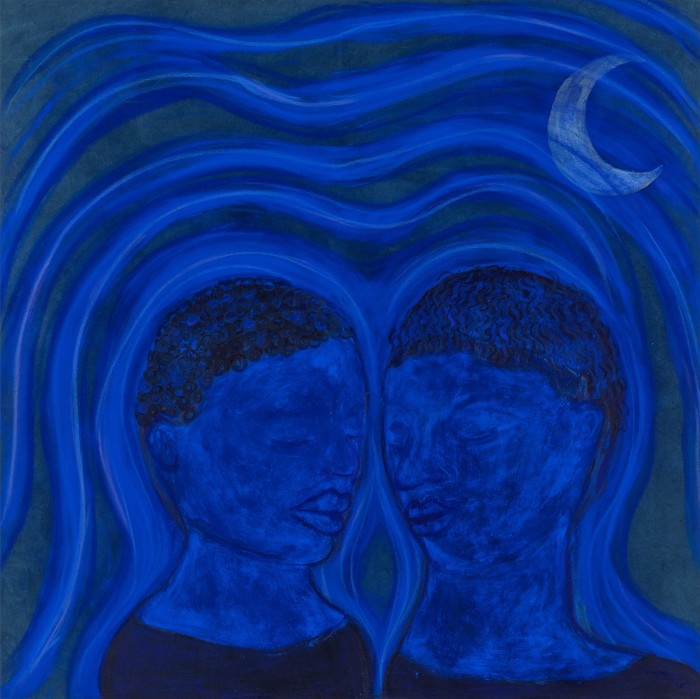
For emerging London-based artist Sola Olulode, cobalt instead serves to intensify skin colour. “I was drawn to blue because of the way it complements black and brown skin tones,” she says. “There is a lot of blue in black artists’ work, particularly in figurative painting. I’d like to be part of that lineage.” Of her perfect hue, Olulode references a quote from Barry Jenkins’s film Moonlight: “In moonlight, black boys look blue.”
Sometimes blue can be disheartening. My favourite expression is the cobalt-inflected royal blue of Everton Football Club, which, at the time of writing, is in the Premier League’s relegation zone. Still, I wear my shirt – and phone case – with pride. It may not be cause for celebration, but it’s nonetheless a tantalising shade.
Comments